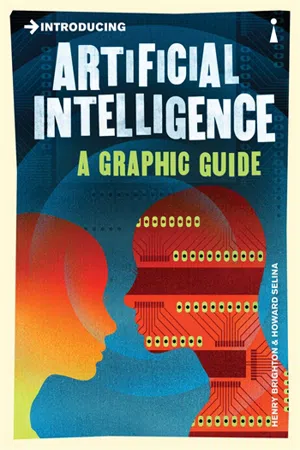
- 176 pages
- English
- ePUB (mobile friendly)
- Available on iOS & Android
eBook - ePub
About this book
Artificial Intelligence is no longer the stuff of science fiction. Half a century of research has resulted in machines capable of beating the best human chess players, and humanoid robots which are able to walk and interact with us. But how similar is this 'intelligence' to our own? Can machines really think? Is the mind just a complicated computer program?Addressing major issues in the design of intelligent machines, such as consciousness and environment, and covering everything from the influential groundwork of Alan Turing to the cutting-edge robots of today, Introducing Artificial Intelligence is a uniquely accessible illustrated introduction to this fascinating area of science.
Frequently asked questions
Yes, you can cancel anytime from the Subscription tab in your account settings on the Perlego website. Your subscription will stay active until the end of your current billing period. Learn how to cancel your subscription.
At the moment all of our mobile-responsive ePub books are available to download via the app. Most of our PDFs are also available to download and we're working on making the final remaining ones downloadable now. Learn more here.
Perlego offers two plans: Essential and Complete
- Essential is ideal for learners and professionals who enjoy exploring a wide range of subjects. Access the Essential Library with 800,000+ trusted titles and best-sellers across business, personal growth, and the humanities. Includes unlimited reading time and Standard Read Aloud voice.
- Complete: Perfect for advanced learners and researchers needing full, unrestricted access. Unlock 1.4M+ books across hundreds of subjects, including academic and specialized titles. The Complete Plan also includes advanced features like Premium Read Aloud and Research Assistant.
We are an online textbook subscription service, where you can get access to an entire online library for less than the price of a single book per month. With over 1 million books across 1000+ topics, we’ve got you covered! Learn more here.
Look out for the read-aloud symbol on your next book to see if you can listen to it. The read-aloud tool reads text aloud for you, highlighting the text as it is being read. You can pause it, speed it up and slow it down. Learn more here.
Yes! You can use the Perlego app on both iOS or Android devices to read anytime, anywhere — even offline. Perfect for commutes or when you’re on the go.
Please note we cannot support devices running on iOS 13 and Android 7 or earlier. Learn more about using the app.
Please note we cannot support devices running on iOS 13 and Android 7 or earlier. Learn more about using the app.
Yes, you can access Introducing Artificial Intelligence by Henry Brighton,Howard Selina in PDF and/or ePUB format, as well as other popular books in Computer Science & Artificial Intelligence (AI) & Semantics. We have over one million books available in our catalogue for you to explore.
Information
Artificial Intelligence
Over the past half-century there has been intense research into the construction of intelligent machinery – the problem of creating Artificial Intelligence. This research has resulted in chess-playing computers capable of beating the best players, and humanoid robots able to negotiate novel environments and interact with people.
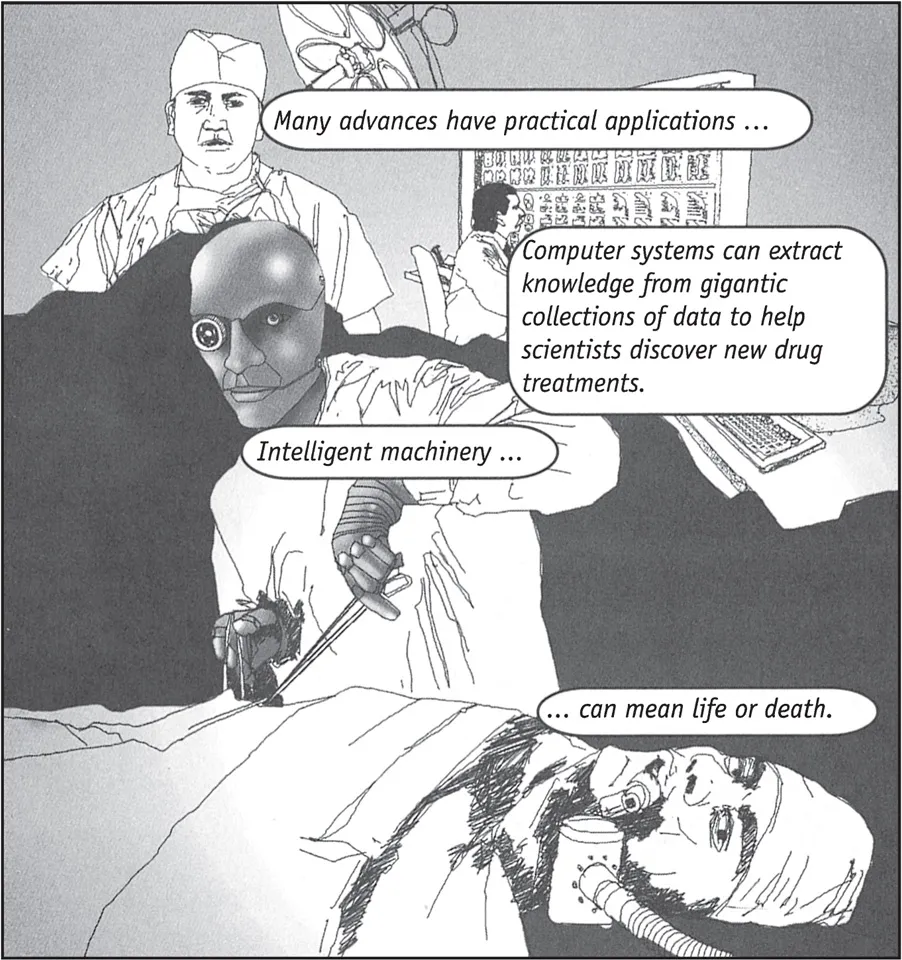
Many advances have practical applications … Computer systems can extract knowledge from gigantic collections of data to help scientists discover new drug treatments. Intelligent machinery… … can mean Life or death.
Computer systems are installed at airports to sniff luggage for explosives. Military hardware is becoming increasingly reliant on research into intelligent machinery: missiles now find their targets with the aid of machine vision systems.
Defining the AI Problem
Research into Artificial Intelligence, or AI, has resulted in successful engineering projects. But perhaps more importantly, AI raises questions that extend way beyond engineering applications.
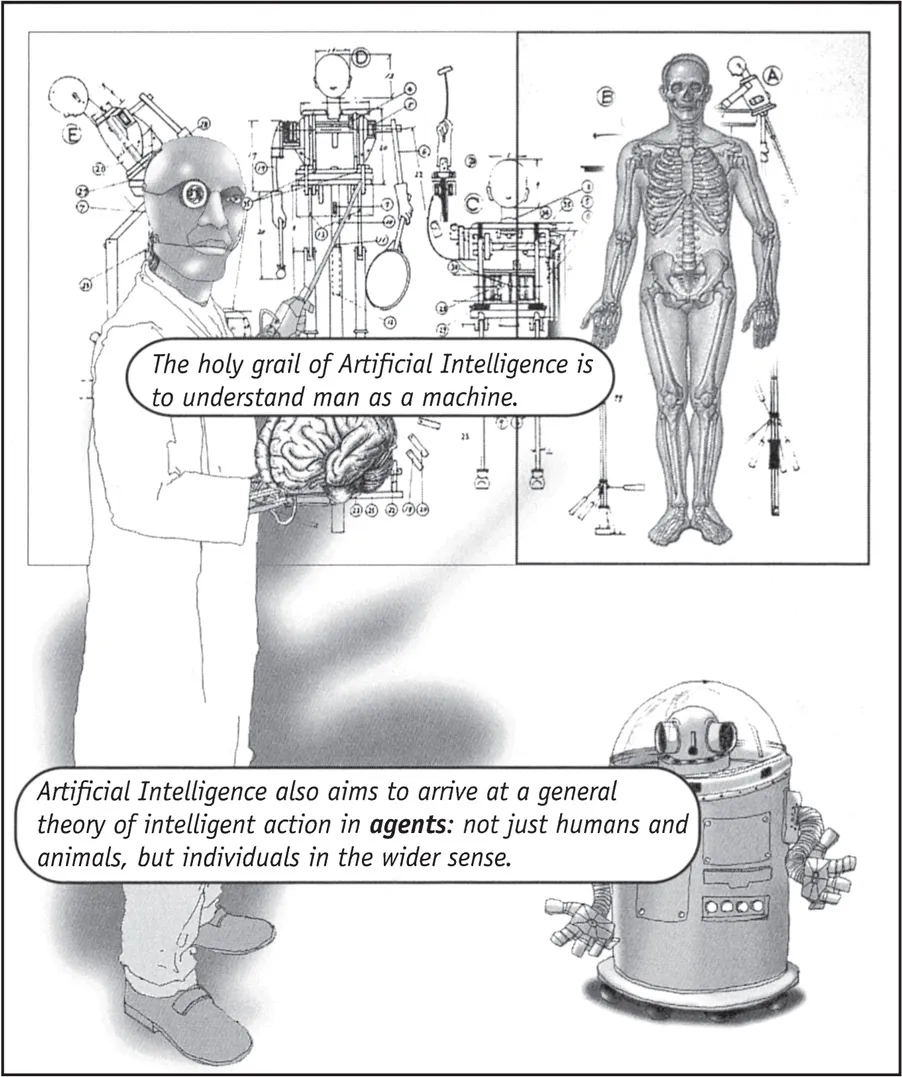
The holy grail of Artificial Intelligence is to understand man as a machine. Artificial Intelligence also aims to arrive at a general theory of intelligent action in agents: not just humans and animals, but individuals in the wider sense.
The capabilities of an agent could extend beyond that which we can currently imagine. This is an exceptionally bold enterprise which tackles, head-on, philosophical arguments which have been raging for thousands of years.
What Is an Agent
An agent is something capable of intelligent behaviour. It could be a robot or a computer program. Physical agents, such as robots, have a clear interpretation. They are realized as a physical device that interacts with a physical environment. The majority of Al research, however, is concerned with virtual or software agents that exist as models occupying a virtual environment held inside a computer.
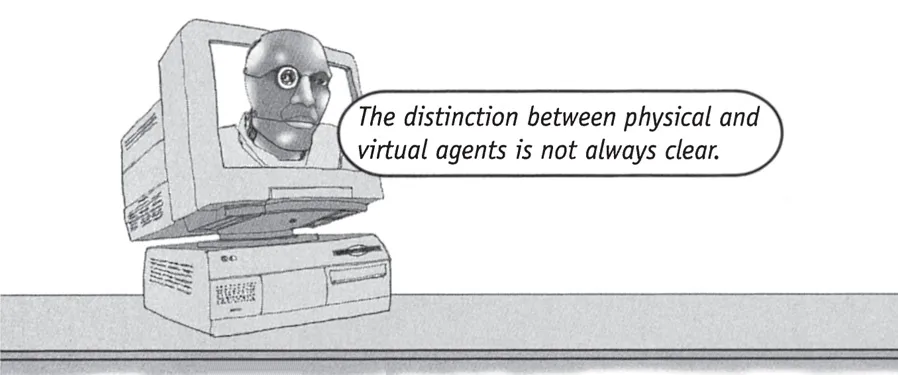
The distinction between physical and virtual agents is not always clear.
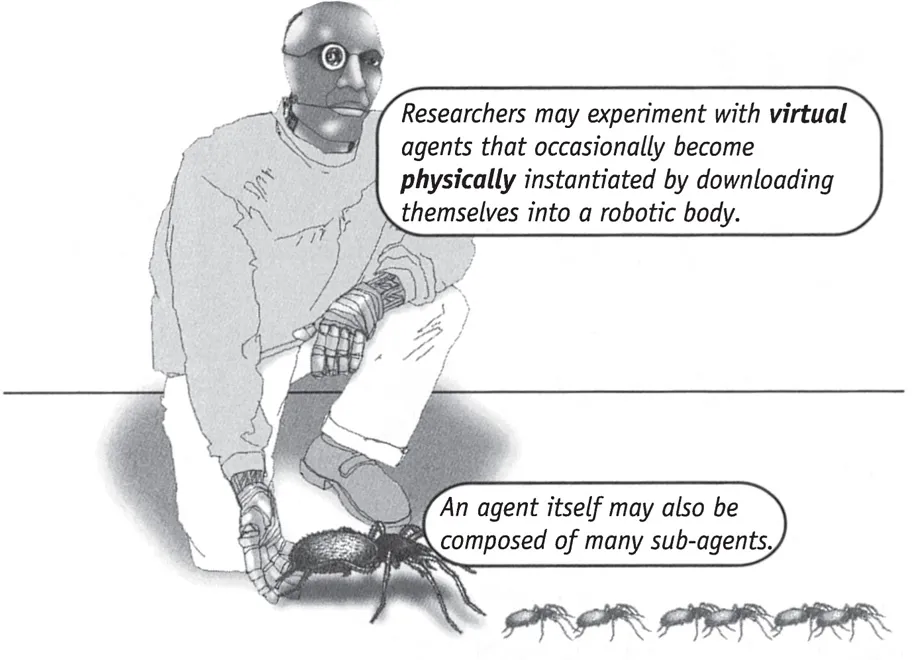
Researchers may experiment with virtual agents that occasionally become physically instantiated by downloading themselves into a robotic body. An agent itself may also be of many sub-agents.
Some Al systems solve problems by employing techniques observed in ant colonies. So, in this case, what appears to be a single agent may be relying on the combined behaviour of hundreds of sub-agents.
AI as an Empirical Science
Artificial Intelligence is a huge undertaking. Marvin Minsky (b. 1927), one of the founding fathers of AI, argues: “The AI problem is one of the hardest science has ever undertaken.” AI has one foot in science and one in engineering.

In its most extreme form, known as Strong AI, the goal is to build a machine capable of thought, consciousness and emotions. This view holds that humans are no more than elaborate computers. Weak AI is less audacious.
The aim of Weak AI is to develop theories of human and animal intelligence, and then test these theories by building working models, usually in the form of computer programs or robots.
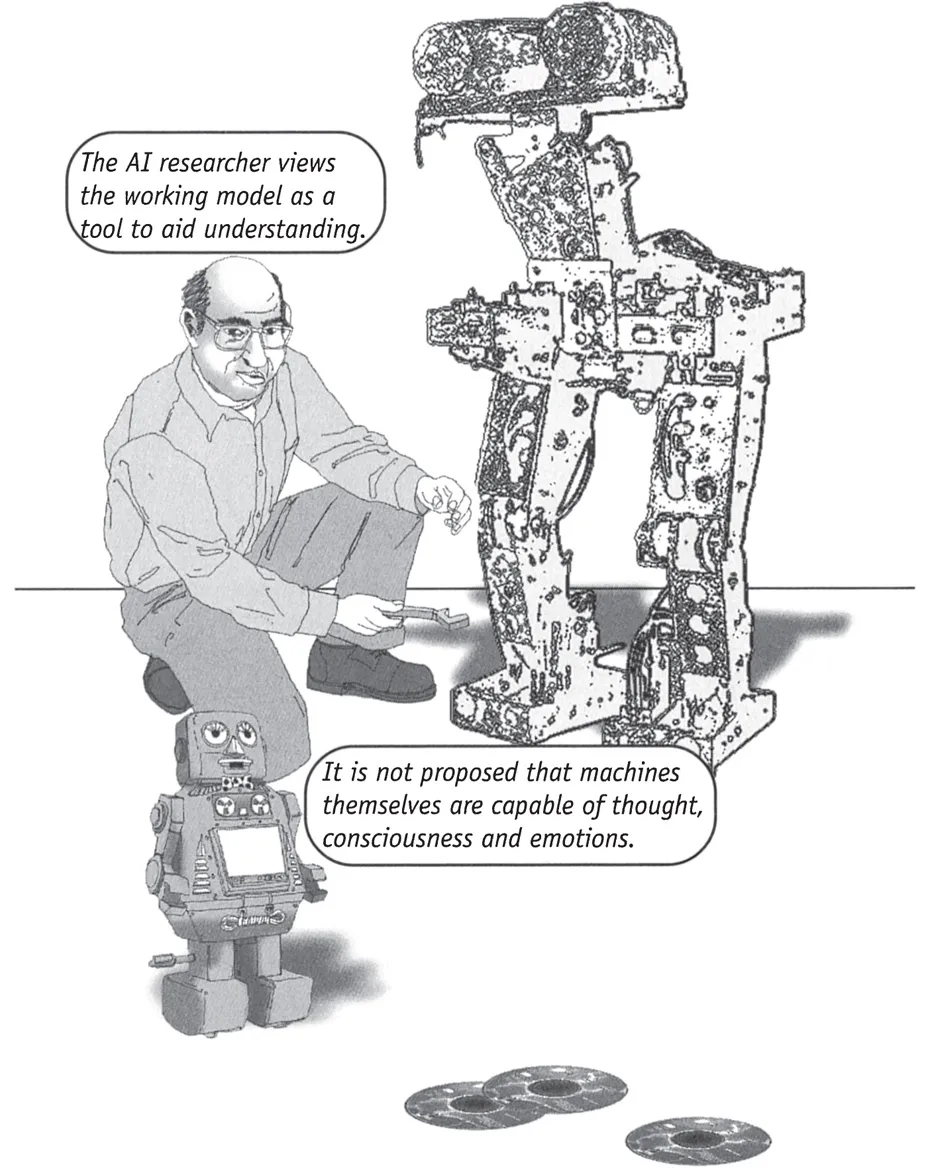
The AI researcher views the working model as a tool to aid understanding. It is not proposed that machines themselves are capable of thought, consciousness and emotions.
So, for Weak AI, the model is a useful tool for understanding the mind; for Strong AI, the model is a mind.
Alien-AI Engineering
Al also aims to build machinery that is not necessarily based on human or animal intelligence.

Such machines may exhibit intelligent behaviour, but the basis for this behaviour is not important. The aim is to design useful intelligent machinery by whatever means.
Because the mechanisms underlying such systems are not intended to mirror the mechanisms underlying human intelligence, this approach to Al is sometimes termed Alien-AI.
Solving the AI Problem
So, for some, solving the Al problem would mean finding a way to build machines with capabilities on a par with, or beyond, those found in humans.

Humans and animals may turn out to be the least intelligent examples of a class of intelligent agents yet to be discovered. The goal of Strong Al is subject to heated debate and may turn out to be impossible.
But for most researchers working on Al, the outcome of the Strong Al debate is of little direct consequence.
Ambition Within Limits
AI, in its weak form, concerns itself more with the degree to which we can explain the mechanisms that underlie human and animal behaviour.

The construction of intelligent machines is used as a vehicle for understanding intelligent action. Strong AI is highly ambitious and sets itself goals that may be beyond our grasp.
The strong stance can be contrasted with the more widespread and cautious goal of engineering clever machines, which is already an established approach, proven by successful engineering projects.
Taking AI to its Limits
Immortality and Transhumanism
“We cannot hold back AI any more than primitive man could have suppressed the spread of speaking” – Doug Lenat and Edward Feigenbaum
If we assume that Strong AI is a real possibility, then several fundamental questions emerge.

Imagine being able to leave your body and shifting your mental life onto machinery that has better long-term prospects than the constantly ageing organic body you currently inhabit. This possibility is entertained by Transhumanists and Extropians.
The problem that Strong AI aims to solve must shed light on this possibility. Strong Al’s hypothesis is that thought, as well as other mental characteristics, is not inextricably linked to our organic bodies. This makes immortality a possibility, because one’s mental life could exist on a more robust platform.
Super-Human ...
Table of contents
- Cover
- Title Page
- Copyright
- Contents
- Artificial Intelligence
- Further Reading
- The Author and Artist
- Acknowledgements
- Index